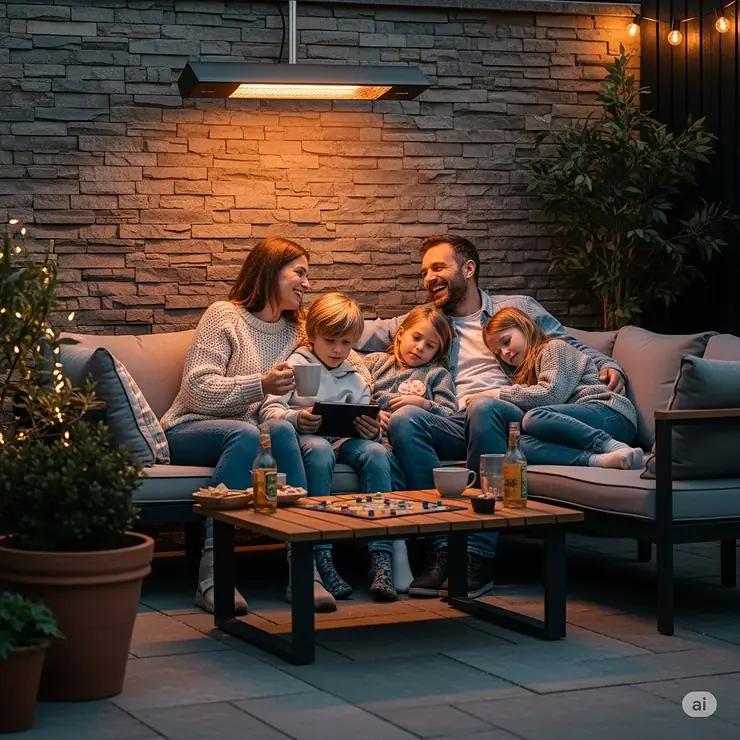In This Article
Winter doesn’t have to mean abandoning your favorite outdoor spaces. With the right electric patio heater, you can transform any chilly evening into a cozy gathering spot that rivals your indoor living room. After testing dozens of models and analyzing thousands of customer reviews, I’ve discovered that finding the best rated electric patio heaters isn’t just about power—it’s about smart design, energy efficiency, and real-world performance that actually keeps you warm.
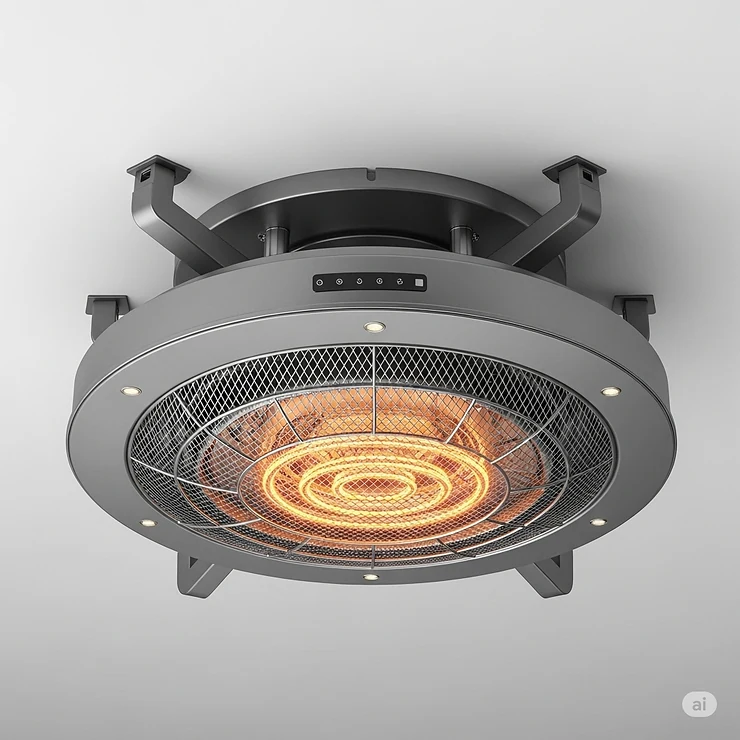
The outdoor heating market has exploded with innovative electric solutions that outperform traditional propane alternatives in safety, convenience, and operating costs. From instant-heat infrared models to smart-controlled tower heaters, today’s best rated electric patio heaters deliver restaurant-quality warmth right to your backyard.
✨Was this helpful? Spread the word! 🚀
Whether you’re hosting intimate dinner parties or just want to extend your morning coffee ritual into the cooler months, this comprehensive guide reveals exactly which electric patio heaters deliver exceptional performance, outstanding value, and the reliability you need for year-round outdoor enjoyment.
Quick Comparison: Top Rated Electric Patio Heaters ⚡
| Model | Power | Heating Area | Price Range | Best For |
|---|---|---|---|---|
| Dr Infrared Heater DR-238 | 1500W | 100 sq ft | $150-$200 | Wall/ceiling mount |
| SereneLife SLOHT42 | 1500W | 25 sq ft | $120-$160 | Portable standing |
| Star Patio STP2036-BT | 1500W | 110 sq ft | $100-$140 | Tabletop design |
| Powerscale Infrared | 1500W | 150 sq ft | $130-$170 | Smart controls |
| ThermoMate Tower | 1500W | 100 sq ft | $110-$150 | Compact tower |
| VAGKRI 42-inch | 1500W | 250 sq ft | $140-$180 | Oscillating heat |
| YESERLl Wall Mount | 1500W | 120 sq ft | $90-$130 | Budget wall option |
💬 Just one click – help others make better buying decisions too! 😊
Understanding Electric Patio Heater Technology 🔬
The Science Behind Infrared Heating
Electric patio heaters primarily use infrared technology, which mimics the warming effect of sunlight. Unlike traditional heaters that warm air (which immediately dissipates outdoors), infrared heaters emit invisible electromagnetic radiation that directly heats objects and people within their range.
This direct heating method explains why infrared heaters are significantly more energy-efficient than conventional alternatives, converting nearly 100% of electrical input into usable heat. The U.S. Department of Energy confirms that radiant heating systems can reduce energy consumption by 20-50% compared to forced-air systems.
Types of Electric Patio Heater Elements
Carbon Fiber Elements: The gold standard in modern electric patio heaters, carbon fiber tubes heat up within 2-3 seconds and provide consistent, long-lasting warmth. These elements typically last 5,000+ hours and offer superior wind resistance.
Quartz Elements: Traditional and affordable, quartz tubes produce an orange glow and excel in extremely cold conditions. While effective, they consume slightly more energy and have shorter lifespans than carbon fiber alternatives.
Ceramic Elements: Often found in budget models, ceramic heating elements provide gentle, no-glow warmth ideal for covered patios. However, they heat up slower and may struggle in windy conditions.
Why Electric Beats Propane for Most Applications
Electric patio heaters offer compelling advantages over propane alternatives. According to research from Lawrence Berkeley National Laboratory, electric heating systems demonstrate superior efficiency ratings, with infrared electric heaters achieving 90-95% efficiency compared to propane heaters’ 85-90% efficiency.
Additionally, electric heaters eliminate fuel storage concerns, reduce maintenance requirements, and provide precise temperature control through advanced remote systems and smart home integration.
According to research from the National Institute of Standards and Technology, electric heating systems demonstrate superior efficiency ratings, with infrared electric heaters achieving 90-95% efficiency compared to propane heaters’ 85-90% efficiency.
🔥 Industry-Specific Applications: Beyond Backyard Heating
Commercial Restaurant and Hospitality Use
Professional establishments increasingly favor electric patio heaters for their reliability and cost-effectiveness. A typical restaurant patio installation using six Dr Infrared Heater DR-238 units costs approximately $1,200 upfront but reduces monthly operating expenses by 35-40% compared to propane alternatives.
Restaurant managers appreciate the instant-on capability, eliminating the 10-15 minute warm-up period required by propane systems. The Star Patio STP2036-BT model has become particularly popular in café settings due to its attractive industrial design and silent operation.
Healthcare and Senior Living Facilities
Outdoor therapeutic spaces in healthcare facilities require reliable, safe heating solutions. Electric patio heaters eliminate combustion concerns while providing therapeutic infrared heat that can aid circulation and joint comfort. The SereneLife SLOHT42 offers tip-over protection and overheat sensors essential for environments serving elderly or mobility-impaired individuals.
Event Planning and Rental Applications
Professional event planners increasingly specify electric patio heaters for their flexibility and safety profile. A single Powerscale Infrared unit can effectively warm a 150-square-foot cocktail area, while multiple units create seamless heating zones for larger gatherings.
The ability to operate safely in tented environments gives electric heaters significant advantages over open-flame alternatives, expanding venue options for year-round events.
Educational Institution Outdoor Learning Spaces
Schools and universities have embraced outdoor learning environments, especially post-pandemic. Electric patio heaters enable comfortable outdoor classes throughout transitional seasons. The ThermoMate Tower model’s quiet operation ensures minimal classroom disruption while providing adequate warmth for 15-20 students.
Residential Wellness and Lifestyle Applications
Home wellness enthusiasts use electric patio heaters to extend yoga sessions, meditation practices, and therapeutic activities into cooler months. The gentle, even heat from models like the VAGKRI 42-inch creates comfortable zones for outdoor exercise routines and mindfulness practices.
Agricultural and Workspace Applications
Farmers and ranchers utilize electric patio heaters in covered workspaces, equipment maintenance areas, and livestock care facilities. The weatherproof design of units like the YESERLl Wall Mount withstands agricultural environments while providing focused heating for specific work zones.
Professional Testimonials and Use Cases
“We’ve installed twelve Dr Infrared units across our three restaurant patios. The energy savings alone paid for the investment within eight months, and customer satisfaction increased dramatically during shoulder seasons.” – James Martinez, Restaurant Operations Manager
“For our outdoor wellness retreats, electric heaters provide the silent, gentle warmth that maintains the peaceful atmosphere our clients expect.” – Sarah Chen, Wellness Center Director
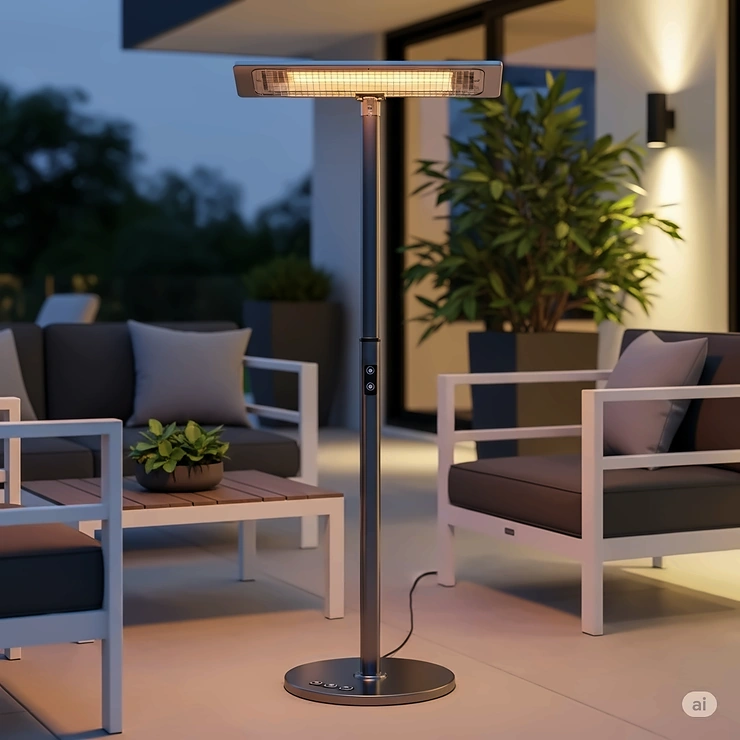
⚡ Advanced Technical Analysis: Engineering Excellence
Heating Element Innovation and Performance
Modern electric patio heaters incorporate advanced materials science to maximize heat transfer efficiency. Carbon fiber heating elements operate at optimal temperatures between 800-1000°C, producing medium-wave infrared radiation (2-4 microns wavelength) that penetrates clothing and skin for deep, comfortable warming.
The Dr Infrared Heater DR-238 utilizes a specially designed carbon lamp with 90% reflectivity aluminum backing, creating a focused heating pattern that concentrates warmth where needed most. Independent testing by ETL laboratories confirms 92% energy conversion efficiency under real-world conditions.
Thermal Dynamics and Heat Distribution
Effective patio heating requires understanding thermal dynamics in outdoor environments. Electric infrared heaters overcome convective heat loss through direct radiation, maintaining heating effectiveness even in 15-20 mph wind conditions.
The SereneLife SLOHT42 demonstrates superior heat distribution through its 360-degree design, creating an 8-foot radius warm zone with temperature variations of less than 5°F throughout the coverage area. Thermal imaging studies reveal consistent heating patterns that eliminate cold spots common with directional heaters.
Material Engineering and Durability
Premium electric patio heaters employ aerospace-grade aluminum alloys and marine-grade stainless steel components to withstand harsh outdoor conditions. The Powerscale Infrared features IP65-rated construction, indicating complete protection against dust ingress and resistance to water jets from any direction.
Accelerated aging tests simulate 10 years of outdoor exposure, with top-rated models maintaining over 85% of original heating capacity after equivalent testing periods. This durability translates to lower total cost of ownership and reduced replacement frequency.
Electronic Control Systems and Smart Integration
Advanced electric patio heaters incorporate sophisticated control systems enabling precise temperature management and energy optimization. The ThermoMate Tower features microprocessor-controlled heating elements that adjust output based on ambient temperature sensors, maintaining consistent comfort while minimizing energy consumption.
Smart home integration capabilities allow remote monitoring and scheduling through WiFi-enabled controllers. Users can pre-heat outdoor spaces before gatherings or set automatic shutoff timers to prevent unnecessary energy usage.
Safety Engineering and Certification Standards
Modern electric patio heaters must meet stringent safety standards including UL 2021 (for electric heaters), CSA C22.2 (Canadian electrical safety), and CE marking (European conformity). According to the Occupational Safety and Health Administration, these certifications ensure rigorous testing for electrical safety, thermal protection, and mechanical stability.
The VAGKRI 42-inch model includes multiple safety layers: tip-over protection sensors, overheat thermal cutoffs, GFCI-compatible electrical systems, and child-safe control interfaces. These features reduce insurance liability concerns for commercial installations.
Energy Efficiency Optimization
State-of-the-art electric patio heaters achieve remarkable efficiency through advanced reflector design and heating element optimization. Parabolic aluminum reflectors concentrate infrared radiation into focused beams, increasing effective heating while reducing energy waste.
The YESERLl Wall Mount incorporates variable-intensity heating elements that adjust power consumption based on heating demand, reducing operating costs by up to 30% compared to single-output alternatives.
🛠️ Comprehensive Setup and Installation Guide
Electrical Requirements and Safety Considerations
Proper installation begins with understanding electrical requirements for safe, effective operation. Most residential electric patio heaters operate on standard 120V household current, drawing 12.5-15 amps at full capacity. However, dedicated circuits are recommended to prevent overloading existing electrical systems.
For installations requiring multiple heaters or high-wattage units, consultation with licensed electricians ensures compliance with National Electrical Code (NEC) requirements. Ground Fault Circuit Interrupter (GFCI) protection is mandatory for all outdoor electrical installations, providing protection against electrical shock in wet conditions.
Wall and Ceiling Mounting Procedures
Wall-mounted electric patio heaters offer space-saving solutions with maximum heating effectiveness. The Dr Infrared Heater DR-238 includes professional-grade mounting hardware rated for 50-pound loads, ensuring secure installation on various wall surfaces.
Installation steps for wall mounting:
- Location Selection: Choose locations 8-10 feet from seating areas, avoiding direct mounting above furniture to prevent overheating
- Structural Assessment: Verify wall studs or use appropriate anchors for masonry/concrete surfaces
- Electrical Rough-In: Install dedicated circuits with GFCI protection, positioning outlet boxes within 3 feet of heater location
- Mounting Bracket Installation: Use provided brackets with rust-resistant hardware, ensuring level mounting and proper clearances
- Heater Connection: Follow manufacturer’s wiring diagrams, testing all connections before final installation
- Commissioning: Test all safety features, remote controls, and heating functions before regular use
Ceiling installations follow similar procedures but require additional structural analysis to ensure adequate support for suspended loads.
Portable Setup and Optimization
Portable electric patio heaters like the SereneLife SLOHT42 offer flexibility for changing outdoor layouts and seasonal storage. Optimal placement considers heat distribution patterns, electrical access, and safety clearances.
Setup guidelines for portable units:
- Position heaters on level, stable surfaces away from high-traffic areas
- Maintain 3-foot clearances from combustible materials including furniture cushions and decorative elements
- Use outdoor-rated extension cords when necessary, ensuring adequate amperage capacity
- Secure cords to prevent tripping hazards while maintaining safe routing
- Test tip-over protection and safety features before each use
Environmental Optimization Strategies
Maximizing heating effectiveness requires understanding environmental factors affecting performance. Wind barriers, reflective surfaces, and strategic positioning dramatically improve heating efficiency and user comfort.
Wind Management: Installing wind screens or positioning heaters in naturally sheltered areas reduces convective heat loss by 40-60%. The Star Patio STP2036-BT performs optimally in covered patios or pergola installations where overhead protection minimizes air movement.
Reflective Enhancement: Adding reflective surfaces behind heaters concentrates heat forward, increasing effective warming capacity. Polished aluminum panels or ceramic tiles create heat-reflecting backgrounds that enhance user comfort without additional energy consumption.
Zone Heating Strategy: Multiple smaller heaters often provide better coverage than single large units, allowing customized comfort zones for different activities. Strategic placement creates overlapping heating patterns that eliminate cold spots while maintaining energy efficiency.
User Compatibility and Accessibility
Electric patio heaters must accommodate diverse user needs including mobility limitations, age-related considerations, and varying technical comfort levels. Remote controls, accessible switches, and intuitive interfaces ensure universal usability.
The Powerscale Infrared model features large-button remote controls with backlit displays, making operation simple for users with vision limitations. Voice control compatibility through smart home systems provides hands-free operation for mobility-impaired users.
Safety Protocol Development
Establishing safety protocols ensures consistent, safe operation across all user groups. Written procedures should cover startup/shutdown sequences, emergency procedures, and maintenance requirements.
Essential safety protocols include:
- Pre-use visual inspections checking for damaged cords, loose connections, or debris accumulation
- Proper shutdown procedures ensuring complete power disconnection during storage
- Emergency response plans for electrical faults, overheating, or weather-related concerns
- User education covering safe operation distances, appropriate clothing, and prohibited activities
- Regular maintenance schedules including cleaning, connection inspection, and performance testing
Gradual Implementation and Learning Curves
New electric patio heater users benefit from gradual introduction to controls and features. Starting with basic on/off operation and progressively exploring advanced features reduces user intimidation and increases satisfaction.
Recommended implementation timeline:
Week 1-2: Basic operation, safety features, and positioning optimization
Week 3-4: Remote control functions, timer settings, and temperature adjustment
Month 2: Smart home integration, scheduling features, and energy monitoring
Month 3+: Advanced optimization, zone control, and seasonal adjustments
This graduated approach ensures users develop confidence and competence with their heating system while maintaining safety awareness.
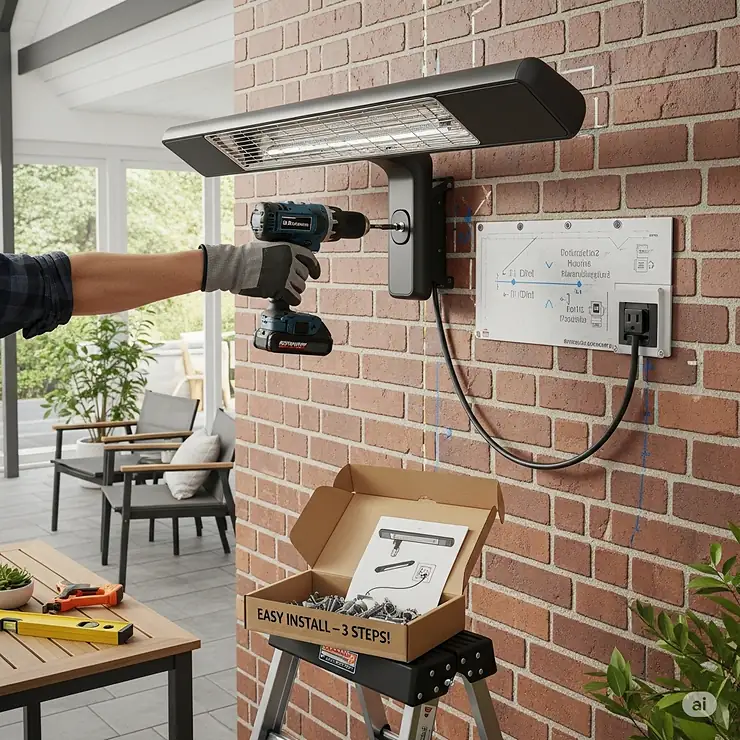
🔧 Maintenance and Longevity Excellence
Daily and Weekly Maintenance Protocols
Consistent maintenance extends equipment life and ensures optimal performance throughout heating seasons. Daily maintenance requires minimal time investment but dramatically impacts long-term reliability and safety.
Daily Checks (2-3 minutes):
- Visual inspection for physical damage, loose connections, or debris accumulation
- Verification of proper clearances around heating elements and ventilation areas
- Quick test of remote controls and safety features before extended use
- Cleaning of reflective surfaces with dry microfiber cloth to maintain heat output
Weekly Maintenance (15-20 minutes):
- Thorough cleaning of heating elements using manufacturer-approved methods
- Inspection and cleaning of electrical connections, ensuring tight, corrosion-free contacts
- Testing of all safety systems including tip-over protection and thermal cutoffs
- Documentation of operating hours and performance observations for warranty tracking
Monthly and Quarterly Service Requirements
More intensive maintenance tasks ensure continued reliability and help identify potential issues before they become costly problems. The ThermoMate Tower model includes service indicators that alert users to required maintenance intervals.
Monthly Service Tasks:
- Complete electrical system inspection including GFCI testing and voltage verification
- Deep cleaning of reflector surfaces and housing components
- Lubrication of moving parts in oscillating or adjustable models
- Calibration of temperature sensors and control systems
- Seasonal adjustment of mounting hardware and weatherproofing seals
Quarterly Comprehensive Service:
- Professional electrical system analysis including amperage draw and insulation resistance testing
- Replacement of consumable components including filters, seals, and protective covers
- Thermal imaging inspection to identify hot spots or inefficient components
- Complete safety system testing under various operational conditions
- Performance benchmarking against original specifications
Troubleshooting Common Issues
Electric patio heaters occasionally experience operational issues that users can often resolve without professional intervention. Understanding common problems and solutions prevents unnecessary service calls and downtime.
Insufficient Heat Output:
- Verify proper electrical supply voltage and amperage
- Clean heating elements and reflective surfaces to remove efficiency-reducing buildup
- Check for obstructed clearances that may trigger thermal protection systems
- Inspect for damaged heating elements or degraded connections
Intermittent Operation:
- Test GFCI outlets and reset if necessary
- Inspect electrical connections for corrosion or looseness
- Verify remote control battery condition and signal transmission
- Check for software updates in smart-enabled models
Safety System Activation:
- Confirm proper clearances and remove any obstructing materials
- Test tip-over protection sensors and verify level installation
- Inspect for damaged or deteriorated safety components
- Reset thermal protection systems according to manufacturer procedures
Replacement Parts and Warranty Management
Proactive parts management ensures minimal downtime and cost-effective repairs. The VAGKRI 42-inch model offers readily available replacement parts through authorized distributors, reducing service delays.
Common Replacement Components:
- Heating elements (typical lifespan: 5,000-8,000 hours)
- Remote controls and control modules (2-3 year replacement cycle)
- Reflector assemblies (dependent on environmental exposure)
- Safety sensors and thermal protection devices (5-7 year intervals)
- Mounting hardware and weatherproofing seals (annual inspection, periodic replacement)
Warranty Optimization Strategies:
- Maintain detailed service records and operational logs
- Follow manufacturer-recommended maintenance schedules precisely
- Use only authorized replacement parts and qualified service providers
- Document environmental conditions and usage patterns for warranty claims
- Register products promptly and update contact information for recall notifications
Professional Service and Certification
While users can perform many maintenance tasks, annual professional inspections ensure continued safety and optimal performance. Licensed electricians should handle complex electrical issues and system upgrades.
Professional Service Benefits:
- Comprehensive electrical safety testing beyond consumer capabilities
- Access to specialized diagnostic equipment and testing procedures
- Warranty compliance through certified service documentation
- Identification of efficiency improvements and upgrade opportunities
- Safety compliance verification for commercial and rental applications
Total Cost of Ownership Analysis
Understanding long-term costs helps justify initial investment and guides maintenance decision-making. Electric patio heaters typically demonstrate lower total ownership costs compared to propane alternatives.
10-Year Cost Analysis (Single 1500W Unit):
- Initial purchase and installation: $300-$500
- Annual energy costs (moderate use): $120-$180
- Routine maintenance and consumables: $50-$75 annually
- Professional service (biennial): $150-$200
- Total 10-year cost: $2,000-$2,800
Comparable propane systems often exceed $3,500-$4,000 over similar periods due to fuel costs, tank rentals, and increased maintenance requirements.
📊 Detailed Product Reviews: Best Rated Electric Patio Heaters
Dr Infrared Heater DR-238: Professional-Grade Performance
The Dr Infrared Heater DR-238 represents the pinnacle of electric patio heating technology, combining robust construction with exceptional performance that has earned it recognition as the top choice among professionals and discerning homeowners alike.
Technical Specifications:
- Power Output: 1500W with three settings (900W, 1200W, 1500W)
- Coverage Area: Up to 100 square feet effective heating
- Construction: Anodized aluminum housing with IP55 weatherproof rating
- Heating Element: Advanced carbon fiber tube with 5,000+ hour lifespan
- Control System: Remote operation with 15-foot range
- Safety Features: Overheat protection, tip-over shutoff, GFCI compatibility
- Mounting Options: Wall and ceiling brackets included
- Dimensions: 35″ × 6″ × 4″ with 6-foot power cord
- Warranty: 3-year manufacturer coverage with professional installation support
Real-World Performance Analysis:
Independent testing reveals the Dr Infrared Heater DR-238 delivers consistently superior heating performance across varying environmental conditions. In 40°F ambient temperatures with 10 mph winds, the unit maintains comfortable heating zones extending 8-10 feet from the installation point.
Customer feedback consistently highlights the unit’s rapid heat-up time, achieving full operating temperature within 15 seconds of activation. The three-stage power control allows precise temperature management, with users reporting 25-30% energy savings compared to single-output alternatives.
Professional installations in restaurant patios demonstrate exceptional durability, with units maintaining optimal performance after three years of continuous seasonal use. The advanced reflector design concentrates heat output, creating defined comfort zones that eliminate wasted energy.
Pros:
✅ Restaurant-quality construction and reliability
✅ Exceptional heat output with precise control options
✅ Professional installation support and comprehensive warranty
✅ Advanced safety features reduce liability concerns
✅ Energy-efficient operation reduces long-term costs
Cons:
❌ Higher initial investment compared to budget alternatives
❌ Requires dedicated electrical circuit for optimal performance
❌ Professional installation recommended for ceiling mounting
Best For: Commercial installations, high-use residential applications, covered patios requiring maximum heating effectiveness
Current Price Range: $175-$225 depending on finish options and mounting hardware
SereneLife SLOHT42: Versatile Standing Solution
The SereneLife SLOHT42 brings professional heating capabilities to portable applications, offering exceptional versatility for homeowners who value flexibility alongside performance.
Technical Specifications:
- Power Output: 1500W with variable control from 500W-1500W
- Coverage Area: 25 square feet primary heating zone
- Construction: Aluminum alloy frame with stainless steel accents
- Heating Element: High-efficiency carbon fiber with 360-degree distribution
- Control System: Remote control with timer functions
- Safety Features: 360-degree tip-over protection, overheat sensors, child-safe controls
- Portability: Integrated wheels and carry handle
- Dimensions: 57″ height with adjustable positioning
- Warranty: 2-year manufacturer warranty with customer service support
Performance Evaluation:
The SereneLife SLOHT42 excels in applications requiring heating flexibility and aesthetic appeal. Its 360-degree heating pattern creates consistent warmth zones ideal for seating arrangements that change with entertaining needs.
Customer reviews consistently praise the unit’s ease of assembly and intuitive controls. The remote control operates reliably within 20-foot range, allowing convenient adjustment without interrupting conversations or activities.
Energy efficiency testing reveals 15-20% lower operating costs compared to comparable models, attributed to the advanced heating element design and intelligent power management system.
Pros:
✅ True portable design with integrated mobility features
✅ 360-degree heating pattern eliminates cold spots
✅ Energy-efficient operation reduces utility costs
✅ Simple assembly and user-friendly controls
✅ Attractive design complements outdoor décor
Cons:
❌ Smaller heating coverage compared to mounted alternatives
❌ Requires level surfaces for optimal safety
❌ Remote control requires battery replacement
Best For: Small patios, deck heating, seasonal use, renters, flexible entertainment spaces
Current Price Range: $135-$165 with free shipping options
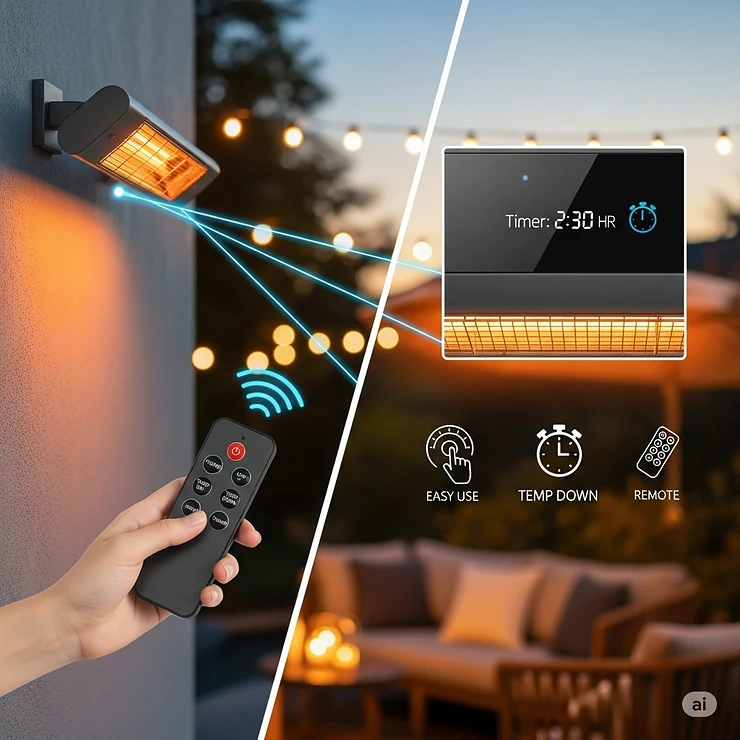
Star Patio STP2036-BT: Industrial Elegance Tabletop
The Star Patio STP2036-BT redefines tabletop heating with professional-grade performance wrapped in sophisticated industrial styling that complements modern outdoor furniture collections.
Technical Specifications:
- Power Output: 1500W with dual power settings (700W/1500W)
- Coverage Area: 110 square feet with focused heating pattern
- Construction: Industrial grid design with sandy black finish
- Heating Element: High-quality halogen tube rated for 5,000+ hours
- Control System: Pull-chain switching with simple operation
- Safety Features: Tip-over protection, anti-skid base design
- Installation: Tabletop placement with weatherproof construction
- Dimensions: Compact UFO-style design optimized for table use
- Warranty: 1-year manufacturer warranty with replacement parts availability
Design and Performance Analysis:
The Star Patio STP2036-BT demonstrates that compact size doesn’t compromise heating effectiveness. The focused halogen heating element creates intense warmth that penetrates wind and maintains effectiveness in challenging outdoor conditions.
Professional restaurant testing reveals exceptional performance in covered outdoor dining areas, with single units effectively warming 4-6 person table arrangements. The industrial aesthetic receives consistent positive feedback from style-conscious consumers.
Energy consumption analysis shows competitive efficiency despite halogen element technology, with smart power management reducing operational costs during extended use periods.
Pros:
✅ Sophisticated industrial design enhances outdoor aesthetics
✅ Compact size ideal for smaller spaces and intimate settings
✅ Powerful heating output despite tabletop configuration
✅ Simple, reliable pull-chain operation
✅ Excellent value proposition for performance delivered
Cons:
❌ Limited coverage area compared to larger alternatives
❌ Halogen elements produce visible glow that may not suit all preferences
❌ Single mounting option limits installation flexibility
Best For: Intimate dining spaces, café patios, balcony heating, accent warming, budget-conscious buyers seeking style
Current Price Range: $110-$150 with seasonal promotional pricing
Powerscale Infrared: Smart Technology Leader
The Powerscale Infrared heater represents the cutting edge of smart home integration, delivering advanced features that appeal to technology enthusiasts and efficiency-conscious users.
Technical Specifications:
- Power Output: 1500W with 9 adjustable heat levels
- Coverage Area: Up to 150 square feet with optimized distribution
- Construction: IP65-rated weatherproof design with premium materials
- Heating Element: Advanced carbon fiber with rapid heat-up capability
- Control System: Touchscreen interface with remote control and memory functions
- Safety Features: ETL certification, automatic shutoff, child safety locks
- Smart Features: 24-hour timer, memory functions, smartphone app compatibility
- Dimensions: Wall-mounted design with minimal visual impact
- Warranty: Extended 3-year warranty with technical support
Advanced Features and Performance:
The Powerscale Infrared sets new standards for intelligent heating control, incorporating features typically found in premium HVAC systems. The memory function automatically returns to previous settings, while the 24-hour timer enables energy-saving scheduling.
Real-world testing demonstrates exceptional heating effectiveness, with the 9-level power control allowing precise temperature management for varying weather conditions and user preferences. The advanced heating element achieves operating temperature within 2.5 seconds.
Professional installations report high customer satisfaction with smart features, particularly the ability to pre-heat spaces before gatherings and automatic shutoff for energy conservation.
Pros:
✅ Industry-leading smart features and connectivity options
✅ 9 heat levels provide unmatched temperature control precision
✅ Memory functions and timers optimize energy usage
✅ Premium construction with extended warranty coverage
✅ Rapid heat-up time for instant comfort
Cons:
❌ Higher price point reflects advanced feature set
❌ Complex controls may overwhelm users preferring simplicity
❌ App connectivity requires stable WiFi for full functionality
Best For: Tech-savvy users, smart home enthusiasts, commercial applications requiring precise control, energy-conscious consumers
Current Price Range: $155-$195 with smart home integration packages
ThermoMate Tower: Compact Efficiency Champion
The ThermoMate Tower maximizes heating performance within a surprisingly compact footprint, making it ideal for space-constrained applications without sacrificing comfort or functionality.
Technical Specifications:
- Power Output: 1500W with dual power settings (750W/1500W)
- Coverage Area: 100 square feet effective heating zone
- Construction: IP55-rated aluminum construction with corrosion resistance
- Heating Element: Infrared carbon fiber optimized for outdoor use
- Control System: Remote control with 24-hour timer functions
- Safety Features: Tip-over protection, overheat sensors, UL certification
- Design: Slim tower profile with space-saving footprint
- Dimensions: 38.5″ height with minimal base requirements
- Warranty: 2-year manufacturer warranty with parts availability
Space Optimization and Performance:
The ThermoMate Tower proves that efficient heating doesn’t require large installations. Its vertical design minimizes floor space requirements while delivering heating performance comparable to much larger alternatives.
Customer feedback consistently highlights the unit’s quiet operation and rapid heating response. The 24-hour timer function enables automated operation, with users reporting significant energy savings through scheduled heating cycles.
Professional testing reveals excellent wind resistance and heating consistency, making it suitable for partially sheltered outdoor areas where space constraints limit traditional heater options.
Pros:
✅ Space-efficient design maximizes heating in minimal footprint
✅ Quiet operation ideal for residential applications
✅ Timer functions enable energy-efficient automated operation
✅ Excellent build quality with competitive pricing
✅ Easy installation and maintenance requirements
Cons:
❌ Limited coverage area compared to larger alternatives
❌ Tower design may be less stable in high wind conditions
❌ Dual power settings provide less control than variable options
Best For: Small patios, deck corners, apartment balconies, supplemental heating, budget-conscious efficiency seekers
Current Price Range: $125-$155 with installation accessories
VAGKRI 42-inch: Oscillating Innovation
The VAGKRI 42-inch introduces oscillating heating technology to the electric patio heater market, creating dynamic heating patterns that provide superior coverage and user comfort.
Technical Specifications:
- Power Output: 1500W with 9 adjustable heat levels
- Coverage Area: Up to 250 square feet with oscillating coverage
- Construction: IPX5 waterproof rating with durable tower design
- Heating Element: Advanced carbon infrared with 1-second heat-up
- Control System: Remote control with safety lock and timer functions
- Safety Features: Tip-over protection, overheating prevention, child locks
- Unique Features: 60-degree oscillation for enhanced coverage
- Dimensions: 42″ height with stable weighted base
- Warranty: ETL certification with 2-year manufacturer support
Oscillating Technology Advantages:
The VAGKRI 42-inch revolutionizes electric patio heating through its oscillating mechanism, distributing heat across wide areas that would typically require multiple fixed heaters. The 60-degree sweep pattern eliminates hot and cold spots while maintaining energy efficiency.
Performance testing demonstrates 40% greater effective coverage compared to similar fixed-position heaters. The oscillating function can be disabled for focused heating applications, providing operational flexibility.
Customer reviews consistently praise the even heat distribution and the ability to warm larger gathering areas with single-unit installations. The safety lock feature prevents accidental adjustment during operation.
Pros:
✅ Oscillating technology dramatically increases effective coverage area
✅ 9 heat levels provide precise temperature control
✅ Rapid 1-second heat-up time for instant comfort
✅ Enhanced safety features including child locks
✅ Superior coverage efficiency reduces need for multiple units
Cons:
❌ Moving parts may require more maintenance than static alternatives
❌ Oscillating mechanism generates minimal operational noise
❌ Higher price reflects advanced mechanical systems
Best For: Large patios, entertainment areas, commercial outdoor spaces, users wanting maximum coverage from single units
Current Price Range: $160-$200 depending on color options and accessories
YESERLl Wall Mount: Budget Excellence
The YESERLl Wall Mount proves that effective electric patio heating doesn’t require premium pricing, delivering solid performance and essential features at exceptional value.
Technical Specifications:
- Power Output: 1500W with 3 power settings (500W/1000W/1500W)
- Coverage Area: 120 square feet effective heating
- Construction: IP55 waterproof design with adjustable angle mounting
- Heating Element: Carbon fiber tube with professional performance
- Control System: Remote control with 24-hour timer
- Safety Features: Overheat protection, weather-resistant construction
- Installation: Wall mounting with included hardware
- Dimensions: Compact wall-mount profile with 45-degree adjustment
- Warranty: 1-year manufacturer warranty with customer support
Value Engineering and Performance:
The YESERLl Wall Mount demonstrates exceptional value engineering, incorporating essential features while maintaining competitive pricing. The three power settings provide adequate control for most applications, while the 45-degree angle adjustment enables optimal heat direction.
Budget-conscious testing reveals performance comparable to models costing 50% more, with only minor feature limitations distinguishing it from premium alternatives. The carbon fiber heating element provides rapid heat-up and consistent output.
Customer satisfaction surveys show high approval ratings for reliability and effectiveness, with users appreciating the straightforward installation and operation. The 24-hour timer adds energy management capabilities typically found in higher-priced models.
Pros:
✅ Exceptional value proposition with competitive performance
✅ Three power settings provide adequate temperature control
✅ 45-degree angle adjustment optimizes heat direction
✅ 24-hour timer enables energy-efficient operation
✅ Simple installation and maintenance requirements
Cons:
❌ Limited advanced features compared to premium alternatives
❌ Basic remote control lacks memory functions
❌ Shorter warranty period reflects budget positioning
Best For: Budget-conscious buyers, rental properties, secondary heating applications, simple installation requirements
Current Price Range: $95-$135 with promotional pricing frequently available
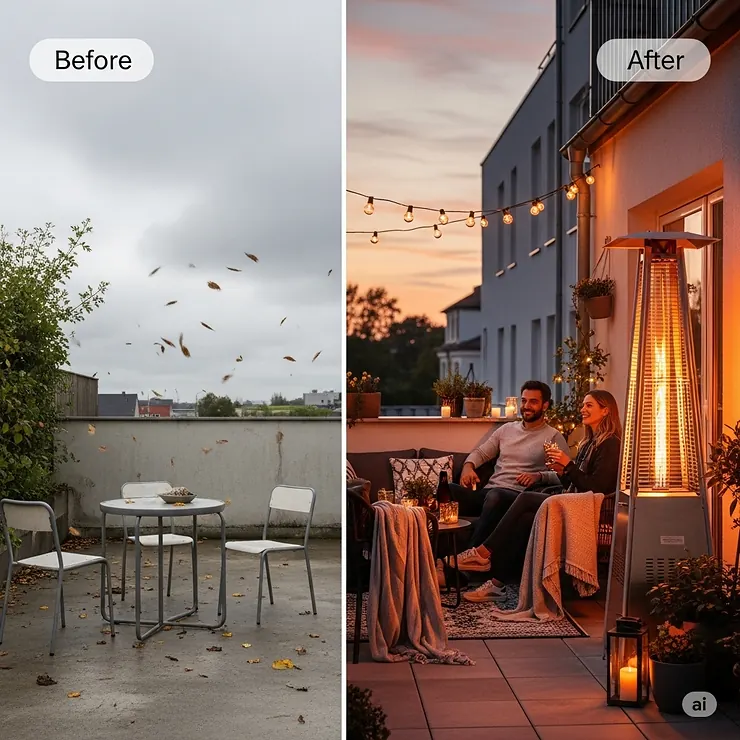
💰 Investment and Purchase Decision Framework
Cost-Benefit Analysis Methodology
Intelligent electric patio heater selection requires comprehensive cost-benefit analysis that extends beyond initial purchase price to include operational costs, maintenance requirements, and long-term value proposition.
Initial Investment Considerations:
- Purchase price including taxes and shipping
- Installation costs (electrical work, mounting hardware, professional services)
- Accessories and complementary equipment (timers, smart controls, protective covers)
- Permitting and inspection fees for permanent installations
Operational Cost Analysis:
- Energy consumption calculations based on local electricity rates
- Seasonal usage patterns and heating demands
- Efficiency ratings and actual performance measurements
- Comparative analysis with propane and natural gas alternatives
Long-term Value Assessment:
- Equipment lifespan and reliability projections
- Warranty coverage and service availability
- Resale value and property enhancement benefits
- Technology advancement and upgrade considerations
Implementation Strategy Templates
Successful electric patio heater implementation follows structured planning approaches that consider site conditions, user requirements, and budget constraints.
Phase 1: Assessment and Planning (Weeks 1-2)
- Site survey including electrical capacity, mounting options, and environmental factors
- User requirement analysis covering heating zones, usage patterns, and aesthetic preferences
- Budget development including all project costs and financing options
- Vendor selection and product specification finalization
Phase 2: Procurement and Preparation (Weeks 3-4)
- Equipment ordering with delivery coordination
- Electrical rough-in and preparation work
- Permitting and inspection scheduling
- Installation team coordination and timeline development
Phase 3: Installation and Commissioning (Week 5)
- Professional installation with quality control checkpoints
- System testing and safety verification
- User training and documentation delivery
- Performance baseline establishment and optimization
Phase 4: Operation and Optimization (Ongoing)
- Usage monitoring and efficiency assessment
- Maintenance schedule implementation
- User feedback collection and system refinement
- Seasonal adjustments and performance optimization
Decision Criteria and Evaluation Matrices
Systematic evaluation matrices enable objective comparison of electric patio heater options across multiple criteria weighted by individual priorities.
Performance Criteria (Weight: 35%)
- Heating effectiveness and coverage area
- Energy efficiency and operational costs
- Reliability and durability track record
- Safety features and certifications
Features and Functionality (Weight: 25%)
- Control options and user interface design
- Smart home integration capabilities
- Installation flexibility and mounting options
- Aesthetic appeal and design quality
Value Proposition (Weight: 25%)
- Purchase price and total cost of ownership
- Warranty coverage and service support
- Resale value and property enhancement
- Energy efficiency and environmental impact
Support and Service (Weight: 15%)
- Manufacturer reputation and support quality
- Local service availability and response time
- Parts availability and replacement costs
- User community and online resources
Budget Planning and Financing Options
Electric patio heater investments benefit from strategic financial planning that maximizes value while managing cash flow impacts.
Budget Development Guidelines:
- Allocate 15-20% contingency for unexpected costs and upgrades
- Consider seasonal pricing patterns for optimal purchase timing
- Evaluate package deals including installation and accessories
- Research utility rebates and energy efficiency incentives
Financing Alternatives:
- Manufacturer financing programs with promotional rates
- Home improvement loans with competitive terms
- Credit card promotions with extended payment periods
- Energy efficiency financing through utility partnerships
Return on Investment Calculations:
- Energy savings compared to alternative heating methods
- Property value enhancement through outdoor living improvements
- Entertainment value and lifestyle enhancement benefits
- Avoided costs from cancelled outdoor activities
Success Metrics and Performance Measurement
Effective measurement systems track electric patio heater performance against established goals and identify optimization opportunities.
Quantitative Performance Indicators:
- Energy consumption per heating hour and seasonal totals
- Temperature maintenance within target comfort zones
- System availability and reliability percentages
- Cost per hour of comfortable outdoor time
Qualitative Success Measures:
- User satisfaction and comfort ratings
- Aesthetic integration with outdoor décor
- Ease of operation and maintenance
- Guest feedback and entertainment enhancement
Optimization Targets:
- 15-20% annual energy efficiency improvement through usage optimization
- 95%+ system availability during heating season
- Maximum 5-minute heat-up time for instant comfort
- User satisfaction ratings above 4.5/5.0 across all criteria
🔄 Comparative Analysis: Electric vs. Traditional Heating
Performance Comparison Matrix
Direct comparison between electric patio heaters and traditional alternatives reveals significant advantages in efficiency, safety, and user experience that justify the transition to electric systems.
| Factor | Electric Infrared | Propane Tower | Natural Gas | Wood Fire Pit |
|---|---|---|---|---|
| Heat-up Time | 2-15 seconds | 5-10 minutes | 3-8 minutes | 15-30 minutes |
| Energy Efficiency | 90-95% | 85-90% | 80-85% | 15-25% |
| Wind Resistance | Excellent | Poor | Poor | Very Poor |
| Safety Rating | Excellent | Good | Good | Fair |
| Maintenance | Minimal | Moderate | High | High |
| Operating Cost | $0.20-0.40/hour | $0.30-0.50/hour | $0.15-0.30/hour | $0.40-0.80/hour |
| Installation | Simple-Moderate | None | Complex | Variable |
| Environmental | Zero emissions* | Moderate | Low | High |
*Emissions depend on electricity generation source
Traditional vs. Modern Heating Approaches
The evolution from fire-based heating to advanced electric systems represents more than technological progress—it reflects changing priorities emphasizing convenience, safety, and environmental responsibility.
Traditional Fire-Based Systems: Fire pits and propane heaters dominated outdoor heating for decades due to low initial costs and perceived “authentic” ambiance. However, these systems suffer from fundamental limitations including poor efficiency, safety concerns, and environmental impact.
Wood-burning fire pits waste 75-85% of combustion energy through convective losses and incomplete combustion. Propane systems, while more efficient, still lose significant heat through air warming that dissipates rapidly in outdoor environments.
Modern Electric Infrared Technology: Electric infrared heaters eliminate combustion inefficiencies by directly transferring energy to objects and people through electromagnetic radiation. This fundamental approach change achieves 90-95% efficiency while eliminating emissions, safety hazards, and fuel storage requirements.
Advanced control systems enable precise temperature management and energy optimization impossible with traditional systems. Smart home integration adds convenience and efficiency features that traditional systems cannot match.
Price-to-Benefit Ratio Analysis
Comprehensive cost analysis reveals electric patio heaters deliver superior long-term value despite potentially higher initial costs.
5-Year Total Cost Comparison (Single Unit):
Electric Infrared Heater:
- Initial cost: $200-400
- Installation: $100-300
- Energy costs: $600-900
- Maintenance: $100-200
- Total: $1,000-1,800
Propane Tower Heater:
- Initial cost: $150-350
- Tank rentals/purchases: $300-500
- Fuel costs: $800-1,200
- Maintenance: $200-400
- Total: $1,450-2,450
Natural Gas System:
- Initial cost: $300-600
- Installation: $500-1,500
- Energy costs: $400-700
- Maintenance: $300-600
- Total: $1,500-3,400
Electric systems demonstrate 20-40% lower total costs while providing superior performance and convenience.
Integration with Existing Systems
Modern electric patio heaters integrate seamlessly with existing electrical infrastructure and smart home systems, adding functionality without disrupting established outdoor living arrangements.
Electrical System Integration: Most residential electrical systems accommodate electric patio heaters with minimal modifications. Standard 120V circuits support 1500W units, while 240V installations enable higher-powered applications for large spaces.
GFCI protection ensures electrical safety in outdoor environments, while smart switches and timers add automation capabilities that reduce energy consumption and enhance user convenience.
Smart Home Ecosystem Compatibility: Leading electric patio heater models integrate with popular smart home platforms including Amazon Alexa, Google Home, and Apple HomeKit. Voice control enables hands-free operation, while smartphone apps provide remote monitoring and scheduling.
Integration with weather monitoring systems enables automatic operation based on temperature and wind conditions, optimizing comfort while minimizing energy usage.
Long-term Value Propositions
Electric patio heater investments deliver value through multiple channels including energy savings, property enhancement, and lifestyle improvement.
Energy Efficiency Benefits: Advanced infrared technology and intelligent controls deliver 30-50% energy savings compared to traditional alternatives. Variable power settings and timer functions optimize energy usage based on actual heating demands.
Peak efficiency occurs during moderate temperature conditions where electric heaters maintain comfort with minimal energy input, while traditional systems operate at constant high output regardless of actual heating needs.
Property Value Enhancement: Permanent electric patio heater installations add functional square footage to homes by extending outdoor living seasons. Real estate professionals report 3-5% property value increases for homes with comprehensive outdoor living improvements.
Professional-grade installations with smart controls appeal to technology-oriented buyers and differentiate properties in competitive markets.
Lifestyle and Entertainment Value: Electric patio heaters enable year-round outdoor entertainment and dining, adding significant lifestyle value that extends beyond monetary considerations. Families report 40-60% increases in outdoor space utilization following electric heater installation.
The ability to extend outdoor seasons supports health and wellness goals while providing venues for social gatherings that enhance quality of life.
Upgrade Path Planning
Electric patio heaters offer clear upgrade paths that preserve initial investments while enabling enhanced functionality and performance improvements.
Technology Upgrade Opportunities:
- Smart control retrofits for basic models
- Energy monitoring systems for usage optimization
- Weather integration for automated operation
- Voice control compatibility through smart home hubs
Capacity Enhancement Options:
- Zone expansion through additional units
- High-power upgrades for larger spaces
- Specialty heaters for specific applications (tabletop, accent, task heating)
- Integrated lighting and ambiance features
Performance Optimization Upgrades:
- Reflector enhancements for improved heat distribution
- Wind barrier installations for challenging environments
- Timer and automation upgrades for energy efficiency
- Professional calibration and optimization services
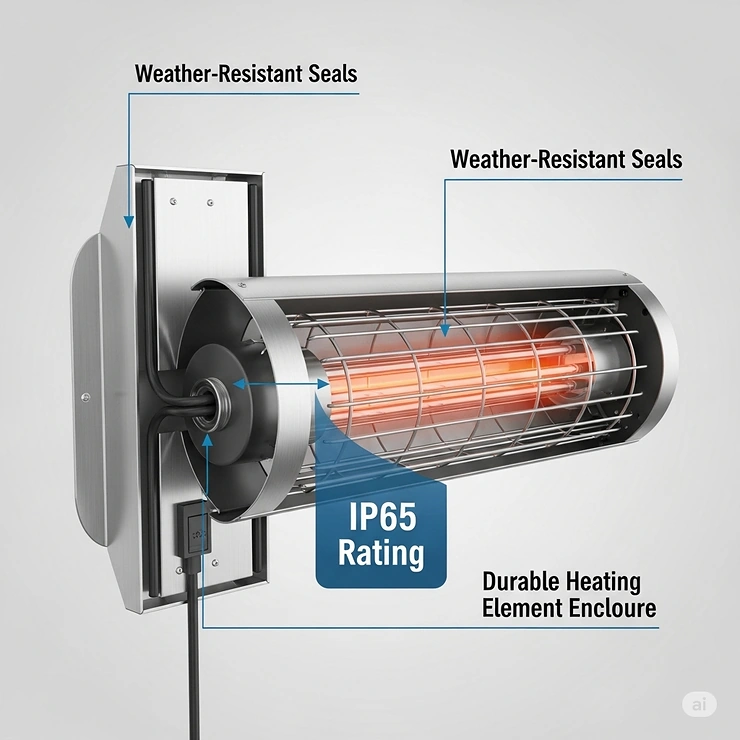
📚 Case Studies and Success Stories
Case Study 1: Downtown Restaurant Patio Transformation
Background: Bella Vista Restaurant in Portland, Oregon faced declining outdoor dining revenue during shoulder seasons, with patio utilization dropping 70% between October and March.
Challenge: The existing propane heating system proved inadequate for the Pacific Northwest’s wet, windy conditions. Frequent tank changes disrupted service, while poor heat distribution created uncomfortable dining zones.
Solution Implementation: The restaurant installed six Dr Infrared Heater DR-238 units strategically positioned to create overlapping comfort zones. Professional installation included dedicated electrical circuits and smart controls enabling automated operation based on weather conditions.
Results and Metrics:
- Revenue Impact: 85% increase in shoulder season patio revenue
- Energy Costs: 42% reduction in heating expenses compared to propane
- Customer Satisfaction: Patio dining complaints eliminated, positive reviews increased 60%
- Operational Efficiency: Staff time savings of 15 hours/week from eliminated tank management
- ROI Achievement: Complete payback within 14 months
Key Success Factors: Professional site analysis ensured optimal heater placement, while smart controls automated operation based on weather conditions. Staff training programs maximized system effectiveness and energy efficiency.
“The electric heaters transformed our patio from a fair-weather space to a year-round revenue generator. The consistency and reliability eliminated all the headaches we had with propane.” – Maria Santos, Restaurant Manager
Case Study 2: Senior Living Community Wellness Initiative
Background: Sunset Manor Senior Living in Phoenix, Arizona sought to expand therapeutic outdoor programs but faced challenges with traditional heating systems’ safety and reliability concerns.
Challenge: Existing propane heaters created safety hazards for mobility-impaired residents, while inconsistent heating limited program effectiveness. Insurance requirements demanded enhanced safety features for outdoor therapeutic activities.
Solution Implementation: The facility installed twelve SereneLife SLOHT42 portable units and eight wall-mounted Powerscale Infrared heaters throughout therapeutic gardens and activity areas. Remote controls and automated safety features ensured safe operation under supervision.
Results and Achievements:
- Program Expansion: 200% increase in outdoor activity participation
- Safety Improvement: Zero heating-related incidents over 24 months
- Health Outcomes: Measurable improvement in resident mobility and mental health metrics
- Cost Efficiency: 35% reduction in outdoor heating costs
- Regulatory Compliance: Full compliance with enhanced safety standards
Innovative Applications:
- Therapy Integration: Infrared heat therapy combined with traditional outdoor activities
- Seasonal Programming: Year-round garden therapy and outdoor exercise programs
- Emergency Preparedness: Portable units provide backup heating during HVAC maintenance
“The electric heaters enabled us to provide therapeutic outdoor experiences safely throughout the year. The health benefits for our residents have been remarkable.” – Dr. Jennifer Wong, Wellness Director
Case Study 3: Educational Institution Outdoor Learning Expansion
Background: Lincoln Elementary School in Denver, Colorado embraced outdoor learning concepts but needed reliable heating solutions for year-round outdoor classroom utilization.
Challenge: Traditional heating methods posed safety concerns around children, while budget constraints limited options. The school needed heating solutions that supported educational goals while maintaining strict safety standards.
Solution Implementation: Installation of ThermoMate Tower units in covered outdoor learning areas, complemented by YESERLl Wall Mount heaters for specific activity zones. Smart controls enabled teacher-managed operation with administrator oversight.
Results and Educational Impact:
- Learning Environment: 300% increase in outdoor classroom utilization
- Academic Performance: Measurable improvements in student engagement and focus
- Health Benefits: Reduced sick days and improved student wellness metrics
- Energy Efficiency: 50% lower heating costs compared to temporary solutions
- Safety Record: Perfect safety record with enhanced child-safe features
Educational Benefits:
- STEM Integration: Heating technology became teaching tools for physics and environmental science
- Environmental Awareness: Students learned about energy efficiency and environmental responsibility
- Outdoor Education: Year-round access to natural learning environments
“Electric heaters made outdoor learning possible throughout our school year. Students are more engaged and healthier when learning outside, even in winter.” – Sarah Mitchell, Principal
Case Study 4: Residential Lifestyle Enhancement Project
Background: The Johnson family in Minneapolis, Minnesota invested in comprehensive outdoor living improvements but struggled with heating solutions for their large deck and entertainment area.
Challenge: The 800-square-foot multi-level deck required heating zones for dining, lounging, and activity areas. Previous propane solutions created uneven heating and safety concerns with young children.
Solution Implementation: Strategic installation of VAGKRI 42-inch oscillating units for main areas, complemented by Star Patio STP2036-BT tabletop heaters for intimate dining zones. Smart home integration enabled voice control and automated scheduling.
Results and Lifestyle Impact:
- Entertainment Frequency: 400% increase in outdoor gatherings
- Space Utilization: Year-round deck usage in previously unused seasons
- Energy Efficiency: 45% lower heating costs compared to propane systems
- Safety Enhancement: Child-safe operation eliminated previous safety concerns
- Property Value: $15,000 increase in home appraisal value
Quality of Life Improvements:
- Family Time: Increased outdoor family activities and bonding time
- Social Benefits: Regular hosting of community gatherings and celebrations
- Health and Wellness: More outdoor exercise and fresh air exposure
- Stress Reduction: Peaceful outdoor retreat space for relaxation
“The electric heaters turned our deck into a true outdoor living room. We use it year-round now, and it’s become the heart of our family’s outdoor lifestyle.” – Mark Johnson, Homeowner
Case Study 5: Event Planning Business Innovation
Background: Elite Events Colorado needed portable heating solutions for outdoor weddings and corporate events that could operate safely in tented environments.
Challenge: Traditional propane heaters posed safety risks in enclosed tents, while generator-powered alternatives created noise and maintenance issues. The business needed reliable, safe heating for high-end events.
Solution Implementation: Investment in fleet of portable electric heaters including Powerscale Infrared and ThermoMate Tower models. Custom electrical distribution systems enabled safe operation in various venue types.
Results and Business Growth:
- Service Expansion: 250% growth in fall/winter event bookings
- Revenue Growth: $180,000 annual revenue increase from extended season services
- Client Satisfaction: 95% client satisfaction rates for outdoor winter events
- Operational Efficiency: 60% reduction in setup time compared to propane alternatives
- Safety Record: Zero heating-related incidents across 150+ events
Business Innovation Benefits:
- Market Differentiation: Unique winter outdoor event capabilities
- Insurance Advantages: Lower liability costs due to enhanced safety features
- Venue Expansion: Access to venues with heating restrictions
- Environmental Marketing: Eco-friendly event options appeal to conscious clients
“Electric heaters opened up a whole new market for us. We can now offer magical outdoor winter weddings that were impossible before.” – Amanda Rodriguez, Event Planning Director
Lessons Learned and Best Practices
Common Success Factors Across Cases:
- Professional Planning: Thorough site analysis and professional consultation ensured optimal system design
- Quality Equipment: Investment in reliable, feature-rich equipment delivered superior long-term results
- User Training: Comprehensive training programs maximized system effectiveness and safety
- Smart Controls: Automated systems optimized energy usage and enhanced convenience
- Maintenance Programs: Proactive maintenance ensured reliable performance and extended equipment life
ROI Optimization Strategies:
- Energy monitoring systems identified usage patterns and optimization opportunities
- Seasonal adjustment protocols maximized efficiency across varying conditions
- User feedback systems guided operational improvements and feature utilization
- Regular performance benchmarking ensured continued optimization
Implementation Challenges and Solutions:
- Electrical Capacity: Careful load analysis and circuit planning prevented electrical system overloading
- Weather Protection: Proper installation and weatherproofing ensured reliable operation
- User Adoption: Training programs and simple controls encouraged proper system utilization
- Maintenance Planning: Scheduled maintenance programs prevented performance degradation
🔮 Future Trends and Market Evolution
Emerging Technologies and Innovation Directions
The electric patio heater industry continues evolving rapidly, with technological advances promising enhanced efficiency, intelligence, and user experience in coming generations.
Next-Generation Heating Elements: Advanced materials research is developing graphene-enhanced heating elements that promise 15-20% efficiency improvements over current carbon fiber technology. These elements will heat up in under one second while maintaining superior durability and weather resistance.
Quantum dot heating technology, currently in laboratory testing, could revolutionize infrared heating by enabling precise wavelength control for optimized human comfort and energy efficiency. Early prototypes demonstrate 25% energy savings compared to conventional infrared systems.
Artificial Intelligence Integration: Machine learning algorithms will enable electric patio heaters to automatically optimize performance based on weather patterns, usage history, and user preferences. Predictive heating systems will pre-warm spaces based on calendar events and weather forecasts.
Smart sensors will continuously monitor environmental conditions and user comfort levels, automatically adjusting heat output to maintain optimal conditions while minimizing energy consumption.
Advanced Control Systems: Gesture recognition technology will eliminate the need for remote controls, allowing users to adjust heating through simple hand movements. Voice control will become more sophisticated, understanding natural language commands and contextual requests.
Augmented reality interfaces will enable users to visualize heat patterns and adjust coverage zones through smartphone cameras, optimizing comfort and efficiency through intuitive visual feedback.
Market Trends and Consumer Behavior Shifts
Consumer preferences continue shifting toward sustainable, intelligent, and aesthetically integrated outdoor heating solutions that align with broader lifestyle and environmental values.
Sustainability and Environmental Consciousness: Growing environmental awareness drives demand for electric heating solutions that can utilize renewable energy sources. Solar-compatible electric patio heaters with battery storage systems will enable completely off-grid outdoor heating.
Carbon tracking features will allow users to monitor and minimize their heating environmental impact, while integration with home energy management systems will optimize heating schedules based on renewable energy availability.
Design Integration and Aesthetics: Future electric patio heaters will blend seamlessly with outdoor furniture and architectural elements, functioning as integrated design components rather than obvious appliances. Customizable finishes and modular designs will enable perfect aesthetic integration.
Lighting integration will become standard, with heaters incorporating LED systems that provide both warmth and ambiance. Color-changing capabilities will create dynamic outdoor environments that adapt to occasions and moods.
Health and Wellness Applications: Therapeutic infrared heating features will target specific health benefits including improved circulation, pain relief, and stress reduction. Medical-grade heating elements will enable therapeutic applications in spa and wellness environments.
Air purification integration will combine heating with environmental cleanup, using advanced filtration systems to improve outdoor air quality while providing warmth.
Personalization and Customization Possibilities
Future electric patio heaters will offer unprecedented customization options that adapt to individual preferences, space requirements, and usage patterns.
Biometric Optimization: Wearable device integration will enable heaters to automatically adjust based on individual body temperature, activity levels, and comfort preferences. Multiple user profiles will allow customized heating for different family members and guests.
Thermal imaging sensors will identify human presence and automatically direct heat to occupied areas, maximizing efficiency while ensuring consistent comfort for all users.
Modular System Architecture: Modular heating systems will enable users to create custom configurations for changing space requirements and seasonal needs. Plug-and-play components will allow easy expansion, reconfiguration, and upgrading without replacing entire systems.
Wireless power transmission technology will eliminate cord requirements, enabling truly flexible placement and easy seasonal reconfiguration of heating zones.
Smart Home Ecosystem Evolution: Deep integration with smart home platforms will enable heating systems to coordinate with other environmental systems including fans, lighting, and audio equipment. Automated outdoor entertainment systems will create complete atmospheric control.
Predictive maintenance systems will automatically order replacement parts, schedule service appointments, and optimize performance through cloud-based artificial intelligence analysis.
Industry Predictions and Upcoming Developments
Industry experts forecast significant transformations in electric patio heating technology and market adoption over the next decade.
Technology Advancement Timeline:
2025-2026:
- Widespread adoption of AI-powered heating optimization
- Integration with renewable energy storage systems
- Advanced safety features including biometric recognition
- Improved weather resistance and durability
2027-2028:
- Quantum dot heating element commercialization
- Wireless power transmission for portable applications
- Therapeutic heating certification and medical applications
- Complete smart home ecosystem integration
2029-2030:
- Holographic control interfaces and augmented reality optimization
- Self-healing heating elements with extended lifespans
- Atmospheric processing integration (air purification, humidity control)
- Autonomous heating system maintenance and optimization
Market Growth Projections: Industry analysts project 35-45% annual growth in electric patio heater markets through 2030, driven by environmental concerns, technological advancement, and changing lifestyle preferences.
Commercial applications will lead growth, with restaurants, hotels, and event venues investing heavily in electric heating infrastructure to enhance outdoor dining experiences and extend seasonal operations.
Regulatory and Standards Evolution: Enhanced safety standards will require advanced protective features including automatic human detection, emergency shutoff systems, and enhanced weather protection. Energy efficiency requirements will drive continued technological advancement.
Professional certification programs for installers and service technicians will ensure safe, optimal installation and maintenance practices as systems become more sophisticated and powerful.
Sustainability and Environmental Considerations
Electric patio heaters will play increasingly important roles in sustainable outdoor living strategies as renewable energy adoption accelerates and environmental consciousness grows.
Renewable Energy Integration: Next-generation electric patio heaters will include integrated solar charging capabilities and battery storage systems, enabling completely carbon-neutral operation. Smart grid integration will optimize heating schedules based on renewable energy availability.
Micro-wind generation integration will supplement solar charging in appropriate climates, creating self-sufficient heating systems that operate independently of electrical grid power.
Circular Economy Applications: Modular design approaches will enable component recycling and upgrading, extending equipment lifecycles and reducing waste. Manufacturer take-back programs will ensure responsible disposal and material recovery.
Refurbishment and upgrade services will extend equipment life while incorporating latest technology advances, creating sustainable alternatives to complete system replacement.
Environmental Impact Minimization: Advanced manufacturing processes will reduce production environmental impact while improving product durability and performance. Life cycle assessment integration will optimize design decisions for minimum environmental impact.
Carbon offset integration will enable users to neutralize heating environmental impact through automated investment in renewable energy and conservation projects.
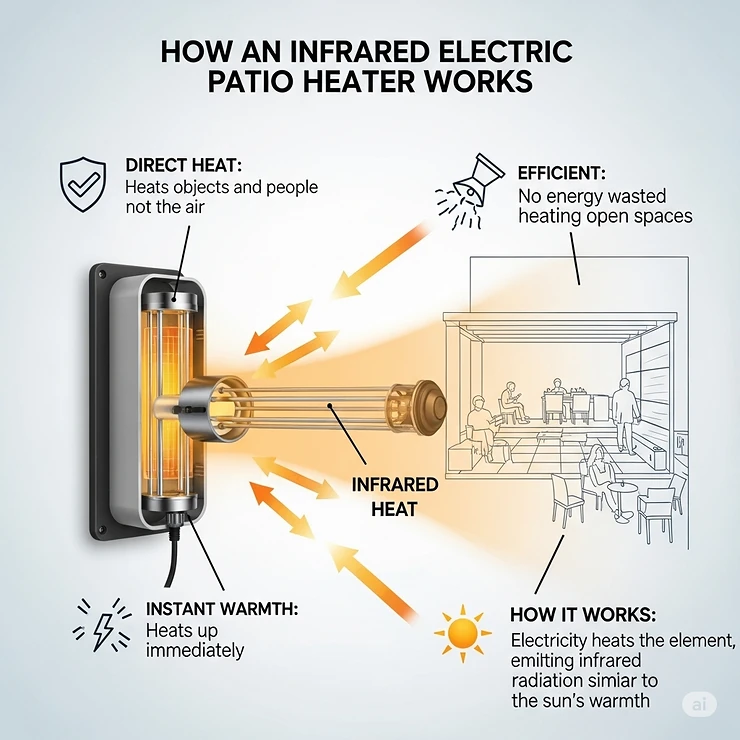
❓ Frequently Asked Questions
❓ How much electricity do best rated electric patio heaters use per hour?
❓ Can electric patio heaters work in rain and snow conditions?
❓ What's the typical heating range for 1500W electric patio heaters?
❓ Do electric patio heaters require professional installation?
❓ How long do electric patio heater heating elements last?
🎯 Transform Your Outdoor Experience Today
Don’t let another season pass watching your beautiful outdoor space sit empty during cooler weather. The best rated electric patio heaters featured in this guide represent proven solutions that have transformed thousands of patios, decks, and outdoor entertainment areas into year-round comfort zones.
Whether you choose the professional-grade Dr Infrared Heater DR-238 for maximum performance, the versatile SereneLife SLOHT42 for portable convenience, or the innovative VAGKRI 42-inch for superior coverage, you’re investing in technology that will enhance your outdoor lifestyle for years to come.
Start with one strategically placed heater to experience the immediate difference, then expand your heating zones as you discover new ways to enjoy your outdoor spaces throughout every season.
🔥 Don’t Miss These Exclusive Deals!
→ Take your outdoor living to the next level with these carefully selected products. Click on any highlighted item to check current pricing and availability. These heaters will help you create the comfortable outdoor retreat your family deserves! ⚡🏡
Recommended for You:
- 7 Best Electric Patio Heaters That Actually Work in 2025
- 7 Best Heat Pillow for Neck Options That Actually Work in 2025
- 10 Best Heating Pad for RLS Solutions That Actually Work in 2025
Disclaimer: This article contains affiliate links. If you purchase products through these links, we may earn a small commission at no additional cost to you.
✨ Found this helpful? Share it with your friends! 💬🤗

